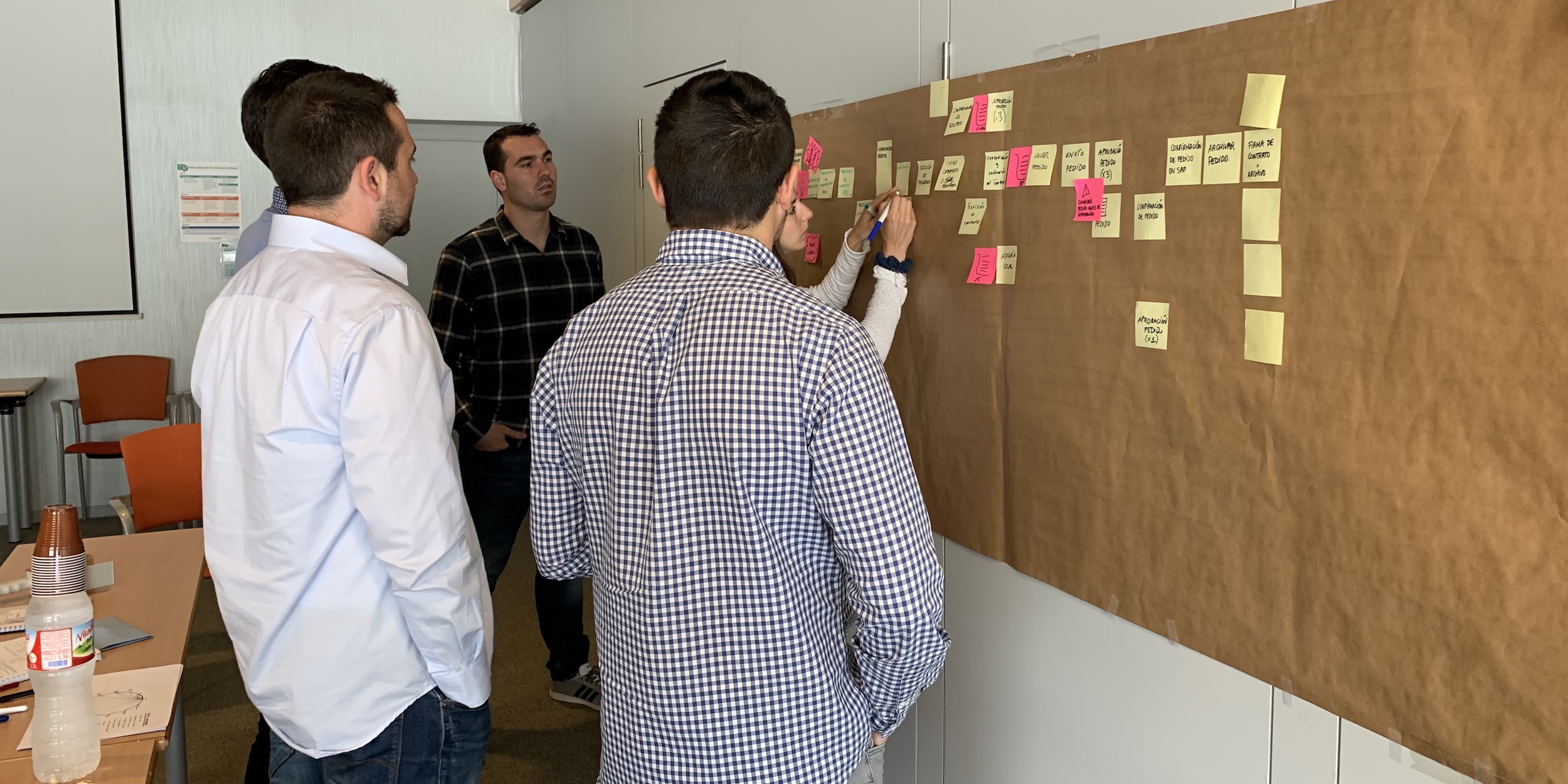
Managing on Purpose
INTERVIEW – A new book on hoshin kanri is out! We sit down with the author to learn about the publication and how it can help organizations.
Interviewee: Mark Reich
Roberto Priolo: Congratulations on publishing the book, Mark. Why did you decide to write it and why do you think it is important for the Lean community?
Mark Reich: After leaving Toyota nearly 14 years ago, I’ve seen a huge gap between the traditional approach to strategy and the way Toyota approaches it. Many organizations formulate strategy at the top and then expect execution to follow. They view strategy as simply a way to achieve financial results and hold people accountable, but at Toyota, it was just as much about building the organization's long-term capabilities. Indeed, one of the most striking aspects I observed at Toyota was how deeply leader development was embedded in hoshin kanri.
When, through my work with the Lean Enterprise Institute, I started helping companies design and deploy their own strategies, I saw firsthand how hoshin kanri not only led them to great business results but also changed leaders’ mindsets. That realization was the driving force behind Managing on Purpose. I wanted to share my experiences taking Toyota insights to the wider Lean Community, while also clearing up common misconceptions about this incredibly effective methodology.
It's important to realize that this is a workbook, but it’s not a book about tools. My focus is on how hoshin kanri can transform organizations by shifting the way they think.
On a personal level, I was an English writing major in college, and writing a book has been on my bucket list for 40 years. I’m thrilled to finally bring my experience to a broader audience.
RP: How did you decide to structure the book?
MR: Hoshin kanri originated from Deming’s teachings in the 1960s, and Toyota was among the first companies to adopt it. Since the PDCA (Plan-Do-Check-Act) cycle is a core principle in Deming’s work, it made sense to structure the book around this concept.
Managing on Purpose is built around a case study – an amalgamation of organizations I’ve worked with. The book begins by introducing the company’s situation: they have a strong reputation in the lawnmower industry, but in recent years, their profits have declined. A key issue is that they are not yet present in the growing electric mower market.
Fortunately, the company had experimented with hoshin kanri the previous year at one plant, with positive results. Based on this success, they decide to roll out hoshin kanri across the organization.
The book follows this journey, structured around the PDCA cycle:
- Plan – The company develops its hoshin strategy, setting clear objectives.
- Do – They execute the plan, applying what they know.
- Check – Progress is reviewed monthly in an Obeya (a large room for tracking progress).
- Act – Mid-year, they reflect on their findings, make adjustments, and refine their strategy.
At the end of the year, they review which priorities should continue as part of their hoshin, which initiatives can transition into daily management, and what long-term commitments are needed to sustain the process.
Since hoshin kanri is a continuous improvement methodology, the book emphasizes that one cycle is never perfect – it’s an ongoing journey that requires commitment and adaptation over time.
RP: What are the key challenges companies encounter when they try to first approach hoshin kanri? In your experience, what typically hinders their attempts to effectively apply it?
MR: The main obstacle is the lack of leadership engagement and support. You can go in and improve a production cell or an entire operation, even with the support of the local manager, but because this is fundamentally about re-constructing how you manage the business, it won’t work until you have the engagement of top leadership.
Hoshin redefines the direction of the company and turns the traditional concept of leadership on its head. That’s why it often encounters resistance. Having an engaged CEO ensures this roadblock can be removed.
Another obstacle to hoshin is certainly the tendency to apply it too early, before the company is mature enough. As the methodology engages middle managers, who all of a sudden understand their role in the success of the business, it energizes people. But that excitement alone isn’t enough to ensure hoshin works: you can put together a lot of really good plans, but if your company is not well-versed in problem solving and doesn’t routinely rely on daily management, you're setting yourself up for failure. There is certainly a time element to hoshin.
Hoshin is a framework for setting priorities for your bottom-up improvement work and, indeed, the organizations that are most successful are those that have been able to build a bridge between local improvement initiatives and company strategy.
RP: Going back to your experience at Toyota, what was the biggest contribution of hoshin to the company?
MR: I joined Toyota in 1988 and held several positions before moving into Corporate Strategy in 2001. The late 1990s and early 2000s were a period of tremendous growth for Toyota in North America – our sales tripled, and we tripled our production capacity, which was an even greater challenge. Initially, Toyota primarily imported cars and operated through a distributor network, but over that decade, we onshored production, significantly expanding our workforce from about 15,000 to 40,000 employees. We also grew from three manufacturing plants – fully controlled by Japan – to around 10-12 plants, while establishing a North American regional headquarters for the first time.
As our operations matured, Japan redirected its focus to China, requiring North America to become more self-sufficient. This shift underscored the need for a structured strategy deployment system, and hoshin kanri became central to that transformation. During my tenure, we established a long-term vision for 2010 and created a structured annual hoshin planning process. This system not only improved alignment across production and administrative functions but also empowered plant leaders and HR executives to take ownership of cross-company initiatives – something they hadn’t done before. Hoshin kanri provided the strategic framework and engagement model that enabled Toyota North America to scale efficiently and sustain its rapid growth.
RP: It’s easy to mistake hoshin kanri for an activity for those in Boardroom only. Can you explain why that’s not the case?
MR: Hoshin kanri is a methodology that engages all levels of an organization. Its most immediate impact is often on middle leaders, as their input is actively sought in defining the business’s direction.
However, this doesn’t mean leadership can step back from setting the strategic vision. Rather, it acknowledges that successful execution requires involvement at all levels – especially from those who understand and manage the day-to-day work, where the actual problems occur.
For example, the case study in the book describes the lawnmower company struggling to take an electric mower prototype from concept to production. The issue wasn’t in upper management’s strategy – it was in the process of transitioning from prototype to full production. Engaging people at the operational level (those closest to the process) was essential to resolving these challenges.
When front-line workers and middle managers are actively involved, they not only help solve critical problems but also define their own roles in supporting company goals. This cascades deeper into the organization, ensuring that even capacity and cost-efficiency challenges – such as increasing production capability – are addressed with insights from those who operate within those systems daily.
That said, it would be an exaggeration to say that hoshin kanri directly touches every single individual in a company. Instead, it focuses on three to five key priorities, ensuring that those relevant to each priority are engaged at the appropriate levels. While not every single person will work on hoshin-specific initiatives, the methodology ensures that critical strategic objectives are executed with input and alignment across the entire organization – including the front line.
RP: What is the role of the Communications Department of a company in helping people understand hoshin?
MR: Without clear communication, confusion can arise as more people become involved in a hoshin initiative.
Once the leadership team is aligned on the methodology and the process they will follow, it’s essential to communicate these changes effectively. The best approach is to introduce communication efforts once the process is initiated – not too early when details are still being finalized.
Of course, training has a huge role to play, too. While employees will learn much of hoshin kanri on the job, a structured introduction – such as a one- or two-day training session – can help. This training should cover the fundamental concepts of hoshin kanri, how it will be applied within the organization, and what is expected from employees in their role.
By clearly communicating these elements, the organization can reduce uncertainty, improve engagement, and ensure that employees understand how they contribute to the company's strategic goals.
RP: Who did you write Managing on Purpose for?
MR: I certainly encourage senior leaders to read it because they need to be actively engaged and involved in the process. Hoshin kanri requires leadership commitment to be successful.
At the same time, the book is also valuable for middle management, as it clarifies their critical role in executing strategy. One key point I emphasize is that organizations – especially larger ones – should designate a process owner for hoshin kanri. Unlike traditional strategy-related roles, which often focus on market research or high-level planning, hoshin kanri is a rigorous, structured process that requires consistent management.
Because of this, I also see continuous improvement teams as a potential audience for the book. They can help organizations define ownership and management of the hoshin kanri process, aligning it with their ongoing work.
Ultimately, I hope leaders at all levels read this book, as successful strategy execution requires engagement across the organization.

THE INTERVIEWEE

Read more


FEATURE – This story of a lean application in elderly care in a Norwegian borough demonstrates the great strides that can be made in providing better service to citizens if their needs become the focus of the work.


INTERVIEW – We meet one of this year's Lean IT Summit speakers to hear about her team’s effective approach to turning Nordstrom’s IT leaders into coaches and truly supporting the firm's lean transformation.


THE NAKED GEMBA – Value stream mapping is a fundamental tool in any lean transformation. The author takes us the most common mistakes companies make using it, so that you can avoid the pitfalls.


FEATURE – Our editor learns about the lean work taking place in two successful omelette-based restaurants in the Netherlands.
Read more


FEATURE – Introducing his book, the author tells us what his Toyota mentors taught him with their contrasting, but ultimately complimentary approaches to problem finding.


FEATURE - The author looks back at his many years with Toyota and shares some of the key lessons he learned along the way. What a unique company!


FEATURE – What a Brazilian bank has learned from its first few steps in adopting hoshin kanri through structured problem solving and people development.


VIDEO - The director of a hotel in the Canary Islands explains the hoshin efforts taking place in the organization and takes us through the lean strategy deployment boards she uses to track progress and highlight problems.

